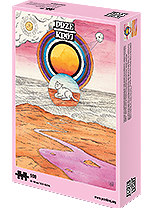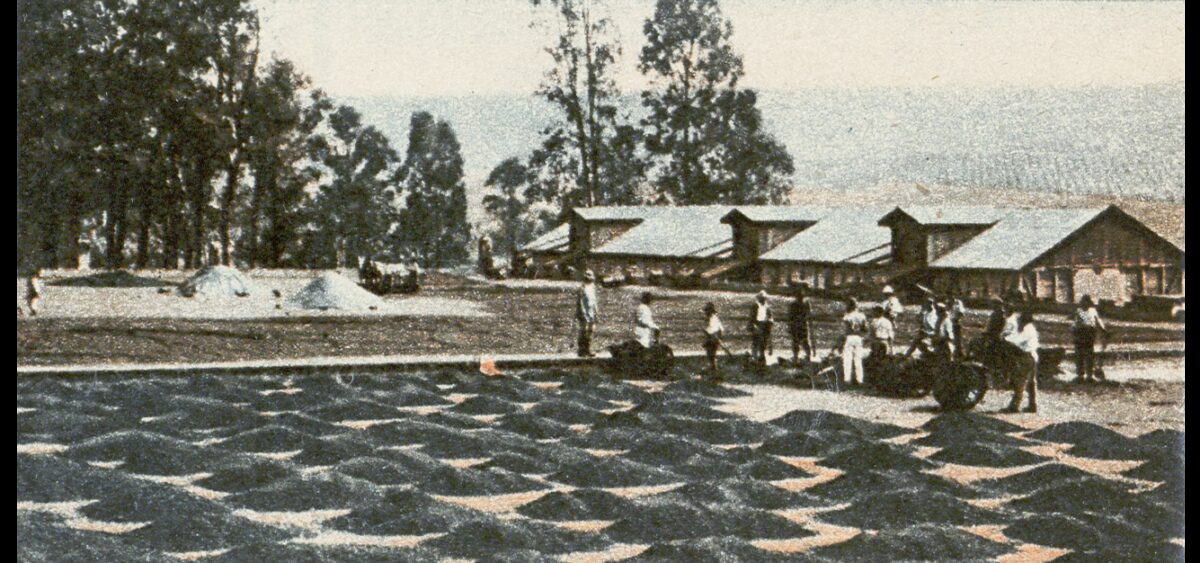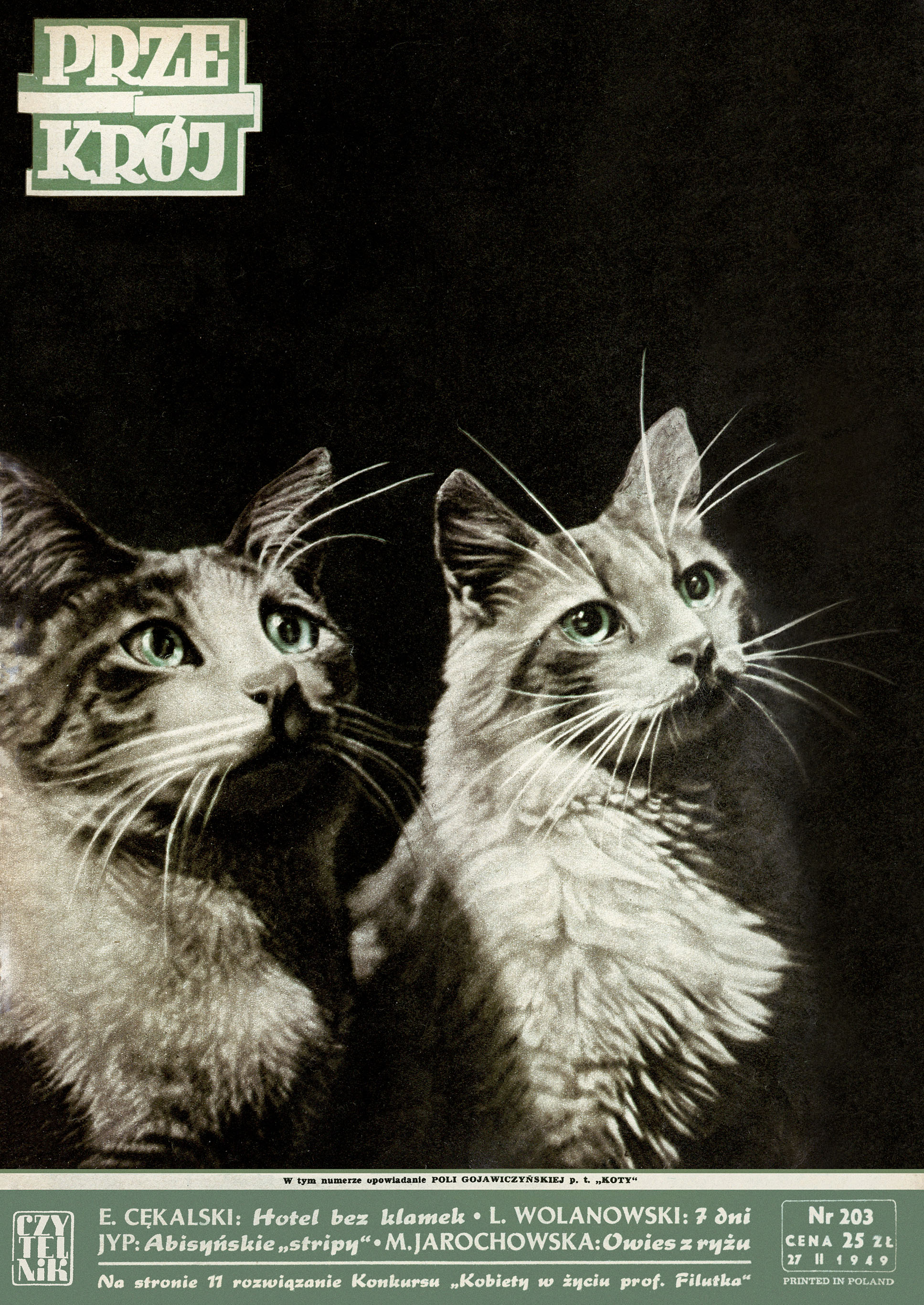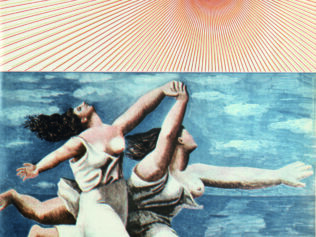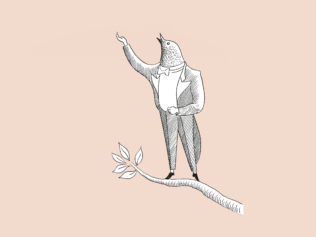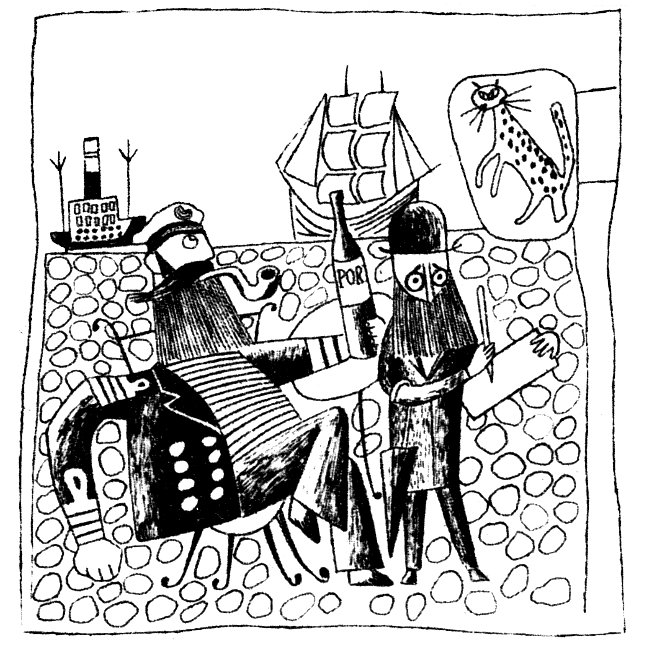
An Arabian legend tells the tale of goats grazing in Abyssinia. One day, the herd began to stubbornly nibble at the dry leaves and berries of a certain kind of bush that was unfamiliar to their shepherds. In the evening, they were exceptionally excited when they came back to their enclosure, virtually in a crazed state.
This happened again and again whenever the animals grazed among the same bushes. One shepherd, concerned for the wellbeing of the livestock under his care, told the owners (who were monks) about what was happening. The foresighted monks cooked up a brew from the berries he brought them, and noticing that the health of the goats had not suffered, they tried the drink themselves. They concluded that they and the goats had discovered an excellent remedy against sleepiness. The pious prior of the monastery immediately harnessed this property of the herb for the good of the faith, ordering that the drink be given to monks who were assigned to stay on vigil all night, praying in the monastery.
The Arabs named the plant qahwa. The brew made from it contains between 0.7% to 1.9% alkaloid caffeine, a narcotic that stimulates the nervous system and boosts heart function. The joint discovery of goats and monks soon not only became the favorite drink of Arabs and Turks, but also an extraordinarily valuable commodity, which spread via caravan routes from Abyssinia to Mecca, to Medina, and onward to Constantinople. Already then, its popularity gave rise to numerous coffeehouses in Abyssinia and Arabia. The Turks Hakam and Shams opened the first café in Constantinople in 1352.
Turkey
The new drug, coffee, began its triumphant march to the West in the 15th century. It was from the Turkish café table-sides that the first coffeehouse rumours – initially innocent, but gradually more frivolous and spiteful – began to spread, slowly entwining the city and even squeezing through the harem walls, all the way to the ruler, Suleiman II. The cautious sultan foresaw the danger such rumours, inseparable from a cup of black brew, posed to state affairs and the throne. The year 1534 saw the first expulsions, when the sultan ordered numerous coffee purveyors out of his land, setting the punishment for surreptitious café-running at 420 lashes, plus a hefty fine (presumably payable by the poor culprit’s next of kin). 100 years after this condemning decree was issued, a state-organized coffee trade had nevertheless emerged, bringing profits to the sultan himself. From there, Levantine merchants brought coffee first to Venice.
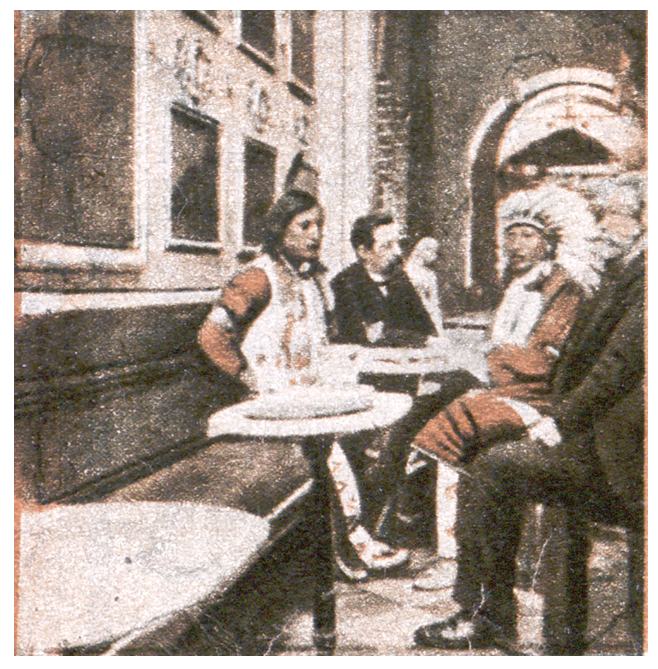
Italy
The Italians quickly learned to love both the new drug and the associated rumours. Already in the first half of the 16th century, Venetian doctors writing in learned tomes recommended the consumption of coffee as a remedy for many illnesses. Coffee soon became an article of everyday consumption in Italy, like pasta and wine.
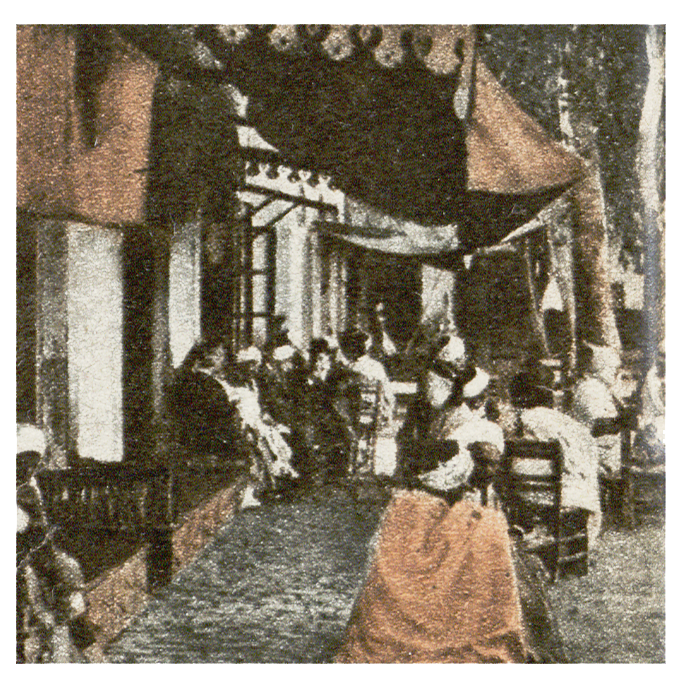
The excellent Venetian comedy writer Carlo Goldoni (1707–1793), known as the Italian Molière, was the first to pay homage to coffee in his entertaining comedies, which were frequently set in Italian cafès. Coffeehouses sprang up like mushrooms in Bologna, Florence and Genoa, and finally, also in Rome. They soon became centres of Italian social, political and literary life. Some of them still retain the patina of long years today, such as the Caffè Florian in Venice or the Caffè Greco in Rome, where such figures as Goethe, Mickiewicz, Byron, Tolstoy, Gorky, Sienkiewicz, and numerous others left behind mementos of the time they spent there in the commemorative book. The Caffè Gennarino Durante in Naples was frequented by musicians, such as Domizetti, Bellini, Rossini and Verdi. There Emanuele Bidera penned his musical manifesto, calling for a revolution in opera even before Wagner. It was in Italian cafès that the Garibaldians, initiators of the Risorgimento, hatched their conspiracies, as did the first fascists in Milan.
France
The first cup of the black brew was drunk by Louis XIV in 1651. It was then a truly regal drink, as a pound (around half a kilo) of coffee cost 40 thalers in France. The memoirist Lebien still recalled with surprise how at a certain party everyone was given a cup of this strange beverage after dinner. An Armenian, Pascal, opened up the first café in Paris on St. Germain square, then a second on Quai d’Ecole. In 1660, huge transports of coffee were reaching Marseille, and the price of a cup in Paris was then just two sous and six deniers. Paris saw the emergence of the Café Molière, the Café d’Orsay (later beloved by Musset), as well as café clubs under the arcades of the Palais Royal, where the nightlife of the politicians and poets of the Great Revolution played out. The most esteemed historic cafés in Paris include the Café Regence, boasting a marble table at which a certain Lieutenant Napoleon Bonaparte would play chess.
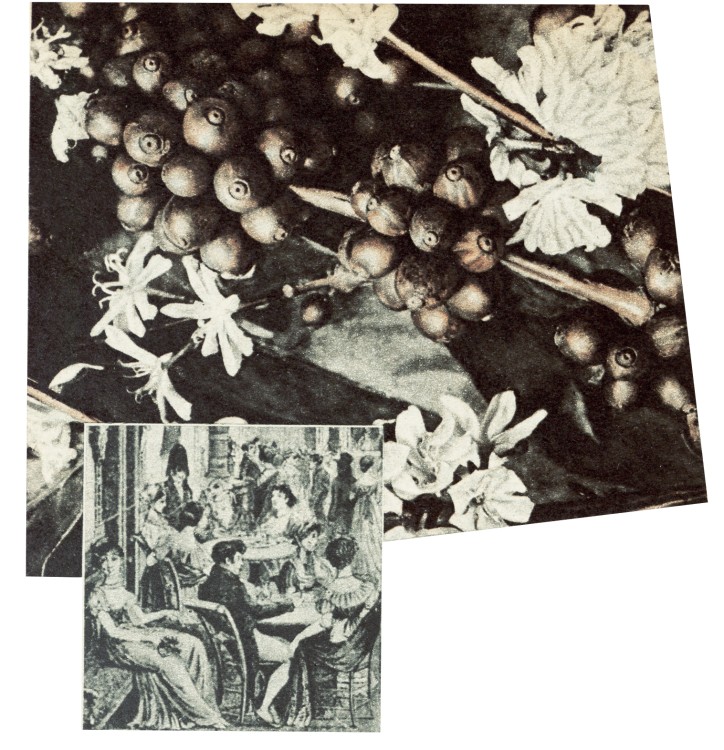
Just how much the French love coffee is evidenced by the fact that they do not limit their consumption of it to cafés. Coffee is also served in even the tiniest of the countless bistros that are strewn around the streets of Paris. A busy Parisian will always find a moment to quickly down a small black cup while standing at the bar, before dashing off into the city on further errands. This shows how the French love not only the atmosphere of the cafés and sitting around in them, but above all, the taste of the black brew itself.
England
Coffee was brought to England by a certain Edwards in 1652. It met with favour from the English snobs, who always eagerly imitated anything that bore a Parisian stamp. However, the English did not learn how to prepare coffee well, and still do not know how to today. As far as the institution of coffeehouses is concerned, the London coffee purveyors in Soho and Piccadilly were doing it all wrong already in 1675 – this was when the municipal authorities ordered all London cafés to be closed, calling them houses for trysting and debauchery. The culture of continental coffee bars is today maintained in London only by Danish café owners.
Germany
In Germany, first a book appeared about coffee, followed only much later by coffee itself. In the small town of Büdingen in Hesse, a treatise was printed under the title “On the miraculous medicinal properties of coffee, aiding the digestion, distilling and warming the stomach, eliminating greensickness and counteracting breast diseases”. This strange brochure advertised coffee commercially, 80 years before it actually became widespread in Germany.
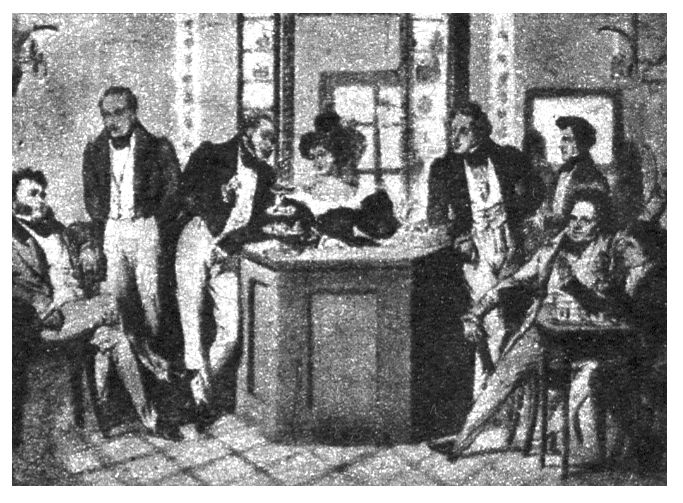
Austria
The Viennese were taught to drink coffee by a Pole, Jerzy Kulczycki, born in Sambor but settled in Vienna, in the Leopoldstadt neighborhood in the mid-17th century. Kulczycki had spent years trading with the East, where he gained excellent knowledge of the language and customs of the Turks. During the Ottoman siege of Vienna in 1683, the commander of the fortress, Count Starhemberg, made use of Kulczycki’s skills and entrusted him to establish communications between the besieged fortress and the Polish troops who had come to the rescue under King Jan III Sobieski. Three times he made his way through the Turkish camp in disguise, acting as a courier. One night when Kulczycki was walking through the camp, singing Turkish folk tunes to himself, a Turkish officer halted him and invited him into his tent, treating him to a cup of black coffee. After liberating Vienna, Jan Sobieski did not forget about what Kulczycki had done, giving him 500 bags of coffee that had been found in the Turkish camp loot, which no one knew what to do with. The magistrate of Vienna, out of gratitude for his service to the city, granted Kulczycki a license to run the first coffeehouse in Vienna. It was first situated near the St. Stefan cemetery, then in The Blue Bottle on Schlossergässchen street. Kulczycki’s coffeehouse soon became a meeting place for wealthy burghers and Viennese artists. For centuries, the Viennese have honoured the memory of the Polish hero and laid laurels on Kulczycki’s portrait in his coffeehouse on the anniversary of its founding, which falls in October. Kulczycki’s popularity in Vienna is also confirmed by the writing and staging of a German theatrical play entitled “First Coffee”, based on the theme of Kulczycki’s life and work.
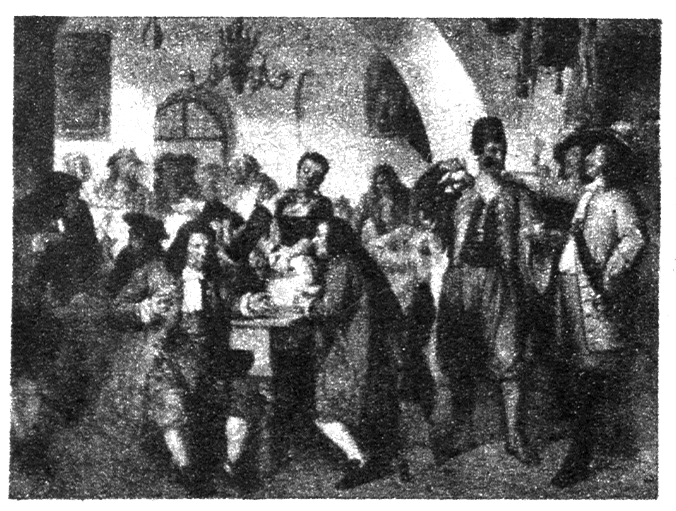
Vienna’s example was followed by such German cities as Nüremberg, Regensberg, Hamburg and Leipzig. The opening of the first Leipzig café was attended by the later Polish and Saxon king Augustus the Strong, who drank his first cup of coffee there. To commemorate the occasion, he funded a marble plaque depicting a coffee bush, installed by the café owner as a street sign. The king took such a liking to drinking the black brew that he ordered an exquisite porcelain service from Meissen decorated with regal numbers and the emblems of the Republic of Poland. This service, alongside a collection of superb gold and silver tableware sets, ended up in the Dresden treasury, in the famous Grünes Gewölbe. Did it survive the last war?
Poland
Coffee in Poland found patrons in King Jan III Sobieski and the aforementioned Augustus the Strong. Together with the latter’s court, it came from Dresden to Warsaw. The first coffeehouse in Warsaw was opened by Sas, a royal courtier, within the Saxon Garden, near the Iron Gate. The first guests included His Majesty’s courtiers, who brought along military leaders and burghers eager to try novelties from the West. The chronicles of old Warsaw mention the Seven Sisters Café, founded in 1763 across from the well on the Old Town Square, and the Okuniowa Café set up in 1790.
Zygmunt Gloger records the history of coffee in Poland as follows:
“Founded somewhat later (after the Okuniowa Café) was Village Coffee, whose seven rooms could barely accommodate all the guests. In 1822, there were 20 coffeehouses in Warsaw. At home, people drank coffee in cups with cream, at fasting time with boiling water or almond milk, after lunch black coffee, and for tea-time again coffee with cream. In smaller homes it was brewed in the wardrobe, on the fireplace under the watchful eye of the housewife or daughters. Coffee had to be strong and with a thick skin on top, which was called ‘Polish coffee’. Sometimes, to economize, coffee was made out of roasted wheat, rye, chicory, acorns, or mixed with true coffee. In rural courts, professional coffee-girls were employed to make coffee.”
This is what Zygmunt Gloger wrote in his Encyklopedia staropolska [Old-Polish Encyclopedia]. We can also recall what Adam Mickiewicz wrote about coffee in his own old-Polish encyclopedia (Pan Tadeusz):
There is no coffee like the Polish kind;
In all well-ordered households you will find
A special coffee-maker – ‘tis her charge
To purchase from the river-trader’s barge
Or from the city store the finest beans
And to prepare it she has secret means,
As black as coal, as amber clearly glowing,
As mocha fragrant, thick as honey flowing.
(Trans. K. Mackenzie, 1990)
Only one Polish poet, the 17th-century writer Andrzej Morsztyn (1621–1693), had a different opinion about coffee, writing:
In Malta, others tried dour coffee, a beverage for Turks,
But this drink so repulsive, this poisonous venom so adverse,
A brew that, onto the teeth, saliva does not beguile
Should nary a Christian mouth ever defile.
(Trans. D. Sax, 2018)
Coffeehouses in Poland, like elsewhere, became salons of democracy, teeming with literary and political life, in the epoch when the aristocratic salons were in their decline. Every period had its own seats of conspiracy in the form of marble café tables. From behind these tables, as if from behind barricades, words were uttered that were meant to shatter whole worlds; words that rang out through clouds of tobacco smoke.
Each epoch had its own fashionable café: a gathering-place for those in the know, or at least pretending to be in the know. There was the Zielony Balonik [Green Balloon] in Kraków, where representatives of the Young Poland movement sat not only with coffee, but also with stronger drinks. There was the Café Lourse in Warsaw, where the excellent actor Mieczysław Frenkiel was at the centre of attention, ridiculing the Tsarist bureaucrats with anecdotes and quips that later made the rounds through the whole city; there were the Udziałowa and Kresy cafés, with the enchanting poet Edward Słoński and theatre producer Stefan Jaracz.
Nowadays, given the great social transformation, we are observing the rightful demise of the old style of café, as hotbeds of good-for-nothing sorts and rumour-mongers. But that does not mean that the black brew itself might be on its way out! For a long time to come, it will certainly remain the faithful companion of artists at work, help clear the brains of scientists, and stimulate the discussions of politicians. Consumed, of course, in sensible moderation.

